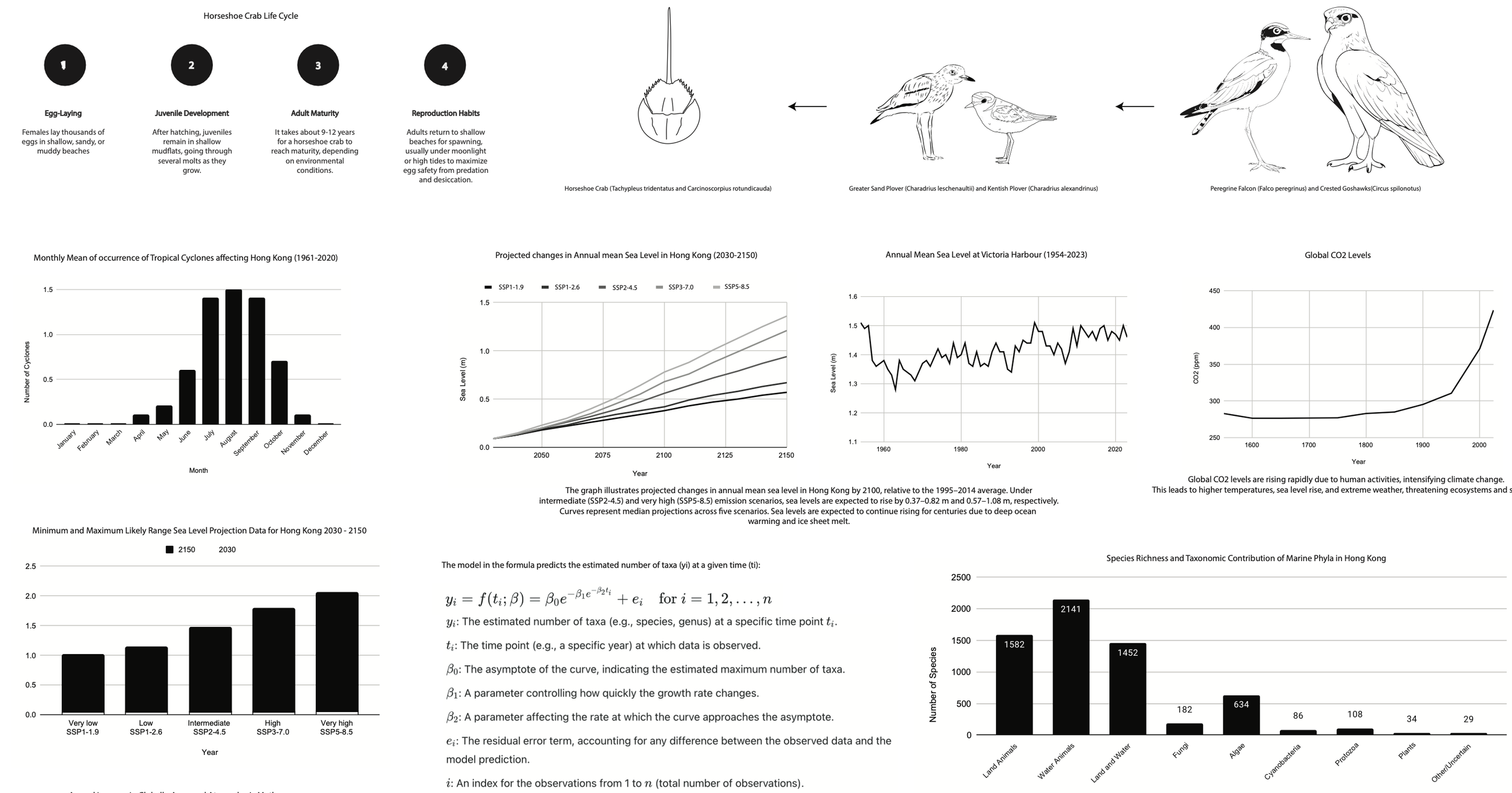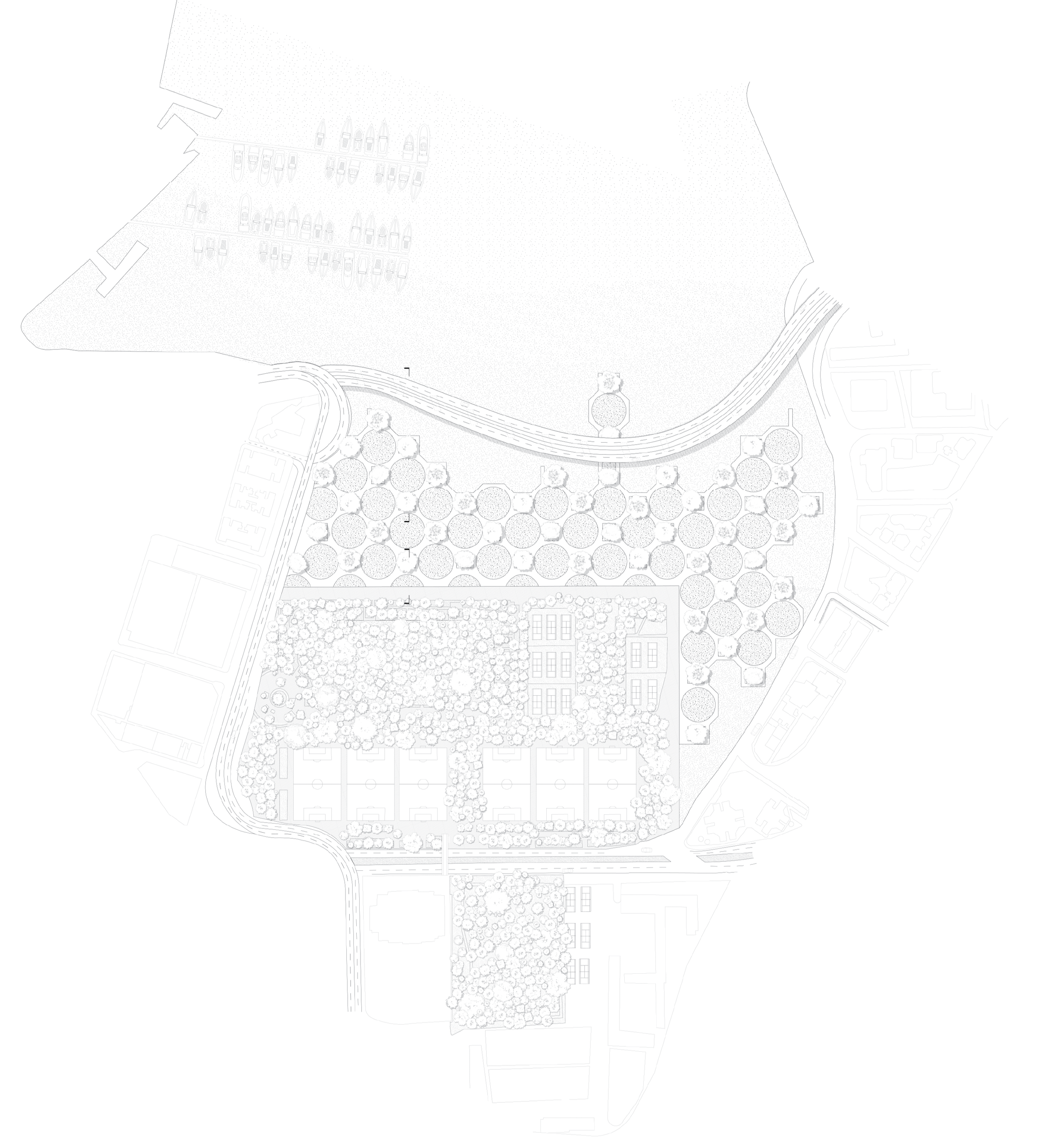Victoria Park is more than green space in Hong Kong’s urban core — it’s a landscape shaped by storm, memory, and renewal. This project traces the park’s journey through time: from the destruction of a 1903 typhoon, through the challenges of today, to a future transformed by rising seas. Across each chapter, the park reveals its quiet strength as a space where nature and culture continue to evolve together.
1903: A Landscape Shaken by Storm
Type of Project: Academic - University of Toronto, John H. Daniels School of Architecture
Year: 2024
My Involvement in the Project: Led and executed this project independently from concept through to completion
In 1903, a powerful typhoon struck Hong Kong’s shoreline, reshaping the land and ecology of what would become Victoria Park. My plan and section capture this collision of natural and human systems — the storm’s force against the city’s fragile edge.
Floodwaters ruptured fuel lines, sewage networks, and boat docks, sending pollutants and debris into the sea. Marine life initially suffered, but the surge of organic runoff and wreckage sparked new biodiversity: algae colonized debris, fish returned to forage, and a fleeting yet vibrant habitat appeared.
This crisis (destruction giving way to renewal) marks the starting point in Victoria Park’s evolutionary story, and frames a design future centered on one extraordinary creature: the endangered horseshoe crab.
During Typhoon
Before Typhoon
Section During Typhoon
2024: Victoria Park Present Day
Victoria Park is a rare horizontal plane in the vertical density of Causeway Bay. Surrounded by towers and highways, it offers pause — courts alive with play, runners tracing its edges, and shaded pockets of relief. A living commons where movement and stillness meet.
Yet this calm belies ecological strain. Rising temperatures, stronger typhoons, and frequent flooding already reshape the park’s soil, rhythms, and ecosystems.
Here, the park becomes a threshold between past resilience and future adaptation. The 1903 typhoon reminds us that disturbance can spark renewal. This tension — between damage and regeneration — anchors my design inquiry, focused on one quiet but vital inhabitant: the endangered horseshoe crab, whose survival may hinge on how we adapt our landscapes today.
Present Day Plan:
2150: Save the Horseshoe Crabs
Victoria Park’s survival depends on resilience, with the endangered horseshoe crab at its heart. These ancient creatures, vital to biodiversity and cultural heritage, face mounting threats from climate change and urbanization.
Resilient Future, Rooted in the Horseshoe Crab – Protecting this species connects ecology, culture, and adaptation.
Flood-Adaptive Wetland (2150) – Rather than resist 1.5m sea level rise, the park evolves into a living wetland.
Wet & Dry Zones – Elevated highways with angled pillars filter flows, preserve recreation, and nurture marine habitats.
Octagonal Boardwalk – Traditional Chinese geometry reimagined as raised habitat restoration, supporting crabs and mangroves.
Mangroves & Predators – Black/small mangroves stabilize shorelines, while banyan and camphor sustain falcons that balance the ecosystem.
This vision turns climate risk into renewal, ensuring Victoria Park endures as both ecological sanctuary and cultural anchor for generations to come.
2150 Plan
2150 Section at Low Tide
2150 Section at High Tide








